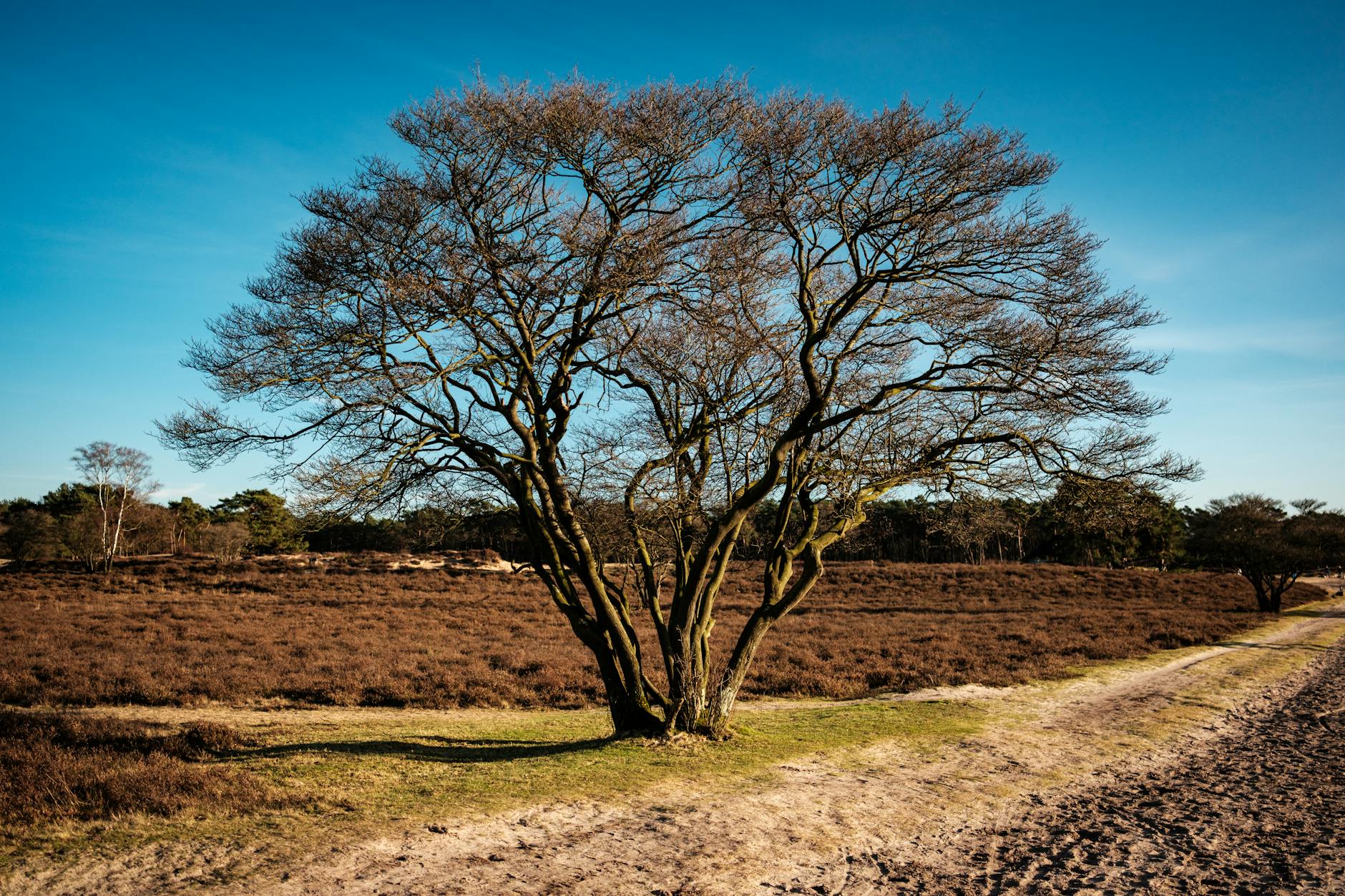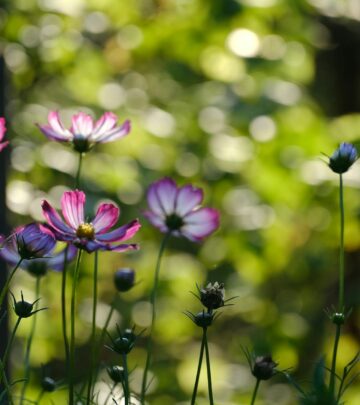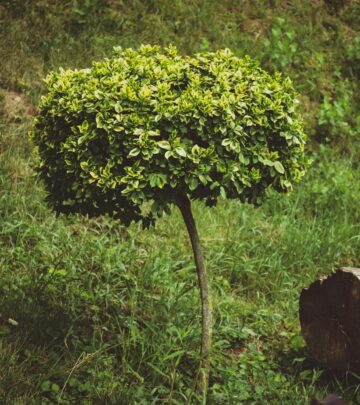Tree Heather (Erica arborea): Complete Guide to Growing and Caring for the Evergreen Heather Giant
A resilient evergreen that brings fragrance and structure to challenging garden spots.

Tree Heather: A Field Guide to Erica arborea
Tree heather (Erica arborea) stands out as a horticultural wonder— a grand evergreen shrub, sometimes reaching up to 13 feet in height. Nicknamed the “Heather Giant,” this plant bridges the gap between shrub and small tree, offering year-round greenery, delightfully fragrant spring blooms, and remarkable versatility in the garden.
- Type: Evergreen shrub or small tree
- Lifespan: Perennial
- Growing Zones: 7–9
- Light Requirements: Full sun or partial shade
- Soil Needs: Acidic, well-draining
- Companions: Camellias, pines, and other acid-loving plants
- Special Features: Drought tolerance, fragrant spring flowers, and unique shape
Why Choose Tree Heather?
Tree heather is justly celebrated for its evergreen foliage, striking stature, and resistance to drought conditions.
In the landscape, it contributes:
- Graceful, upright structure reminiscent of a tiny tree within a shrub’s form
- Highly permumed, tiny white flowers blooming in dense clusters in spring
- Aromatic, fine-textured foliage providing year-round interest
- Design flexibility: Plant as a feature specimen, informal hedge, or in mixed shrubberies
Botanical Background and Origins
The tree heather (Erica arborea) is native to southern Europe and the rugged hillsides of North and West Africa.
This species thrives on rocky, acid soils and has evolved to handle both strong sunlight and lean, dry conditions, making it an asset in problem gardens plagued by drought .
Unlike many traditional heathers, tree heather offers movement, drama, and an intriguing amorphous silhouette. Its capacity to be pruned or left natural amplifies its usefulness to the garden designer .
Appearance and Growth Habit
At full maturity, tree heather can reach heights of 13 feet but is often grown as a more compact shrub in cultivated settings.
The plant is distinguished by:
- Slim, upright stems clothed in fine evergreen leaves
- Foliage colors ranging from dark green to yellow-green in some cultivars
- Delicate, bell-shaped flowers – usually white, occasionally flushed pink, appearing in dense clusters in spring
- Shaggy, bushy habit if left unpruned, but can be trimmed into columns or hedges
Cultivars of Note
Several cultivated forms add diversity in color and form:
- ‘Albert’s Gold’— prized for its yellow-green foliage that remains vibrant year-round
- ‘Estrella Gold’— a slow-grower with golden, needle-like leaves
- Alpine tree heather (Erica arborea var. alpina)— a compact alpine form growing up to about 6.5 feet, perfect for smaller gardens or mountainous settings
Design Tips: Using Tree Heather in the Landscape
- Specimen plant: Showcase as the focal point in smaller gardens
- Structural accent: Plant in groups along boundaries or in gravel gardens for structure and seasonal interest
- Mixed borders: Combine with acid-loving companions like camellias, rhododendrons, and pines for dynamic layers
- Naturalistic settings: Allow its shapely form to stand out in wild, informal plantings
- Fragrance feature: Place near pathways or patios to enjoy perfumed spring flowers up close
Growing Conditions and Requirements
| Condition | Recommendation |
|---|---|
| Sunlight | Full sun to partial shade |
| Soil | Acidic (pH 4.5–6.5), well-draining, lean or sandy soils preferred |
| Water | Low once established; drought tolerant |
| USDA Zones | 7-9 |
| Maintenance | Prune to shape or rejuvenate as needed |
| Peak Bloom | Late winter to spring (varies by geography) |
Planting and Establishment
Tree heather is surprisingly easy to establish in the right conditions:
- Choose the site: Find a location with acidic, well-draining soil and plenty of sunlight.
- Soil preparation: Amend soil with ericaceous (acidic) compost if necessary. Avoid heavy, alkaline clays.
- Planting time: Early spring or autumn are best for rooting in mild climates.
- Watering: Water thoroughly when planting; keep moist until established, then reduce frequency to encourage drought resilience.
Companion Planting
- Pines (Pinus): Shared acidic soil preference and contrasting form
- Camellias: Complementary foliage and shade tolerance
- Rhododendrons/Azaleas: Similar requirements for soil and moisture
Routine Care and Maintenance
- Water sparingly: Deep, infrequent watering is preferable once established
- Mulching: Maintain acidic environment and prevent weed competition with pine needles or ericaceous mulch
- Pruning: After flowering, prune to desired shape, removing dead or damaged wood; hard prunings are tolerated and can rejuvenate old specimens
- Fertilizing: Generally unnecessary, but if desired, use a low-nitrogen fertilizer for acid-loving plants in spring
Pests and Problems
- Drought tolerance: One of its main strengths, but avoid waterlogged soils to prevent root rot
- Few insect pests: Slugs and snails may occasionally damage young shoots
- Leaf color change: Yellowing indicates alkalinity or poor drainage; acidify soil if necessary
Propagation Methods
- Cuttings: Take semi-hardwood cuttings in late summer; root in sandy, acidic compost
- Layering: Bend a low branch to ground, slightly wound it, and cover with soil; roots should form by next season
- Seed: Sowing seed is rare but possible for enthusiasts
Seasonal Highlights
- Spring: Profusion of fragrant, tiny white flowers; peak visual interest
- Summer: Attractive, dense evergreen foliage maintains garden texture
- Autumn/Winter: Continued foliage effect and architectural presence
Tree Heather vs. Other Heathers and Heaths
| Feature | Tree Heather (Erica arborea) | Common Heather (Calluna vulgaris) | Other Heaths (Erica spp.) |
|---|---|---|---|
| Growth Habit | Tall, arboreal shrub/tree | Low, groundcover | Low to medium shrubs |
| Height | Up to 13 feet | Under 2 feet | Varies: 1–5 feet |
| Flower Season | Spring (late winter in UK) | Late summer/fall | Dependent on species |
| Flower Color | White, sometimes pink | Purple, pink, white | Pink, white, red |
| Soil pH | Acidic | Acidic | Acidic |
Frequently Asked Questions (FAQs)
Q: Is tree heather hardy in cold climates?
A: Tree heather thrives in USDA Zones 7-9 and is marginally hardy in colder areas. Protect young plants from harsh winter winds and mulch roots for extra insulation.
Q: Can tree heather be grown in containers?
A: Yes, provided the container allows for acidic, well-drained soil and enough room for roots. Ensure extra protection in colder climates and avoid waterlogging.
Q: How often should I prune tree heather?
A: Prune lightly after flowering each spring to shape, and cut back hard only if rejuvenating very old wood. This encourages bushy growth and enhances flowering.
Q: What companion plants grow best with tree heather?
A: Other acid-loving shrubs, such as camellias, pines, rhododendrons, and certain ornamental grasses, pair well both in terms of aesthetics and cultivation needs.
Q: Why are the leaves turning yellow?
A: Leaf yellowing is often a sign of alkaline soil or poor drainage. Remedy this by amending soil with ericaceous compost and monitoring watering habits.
Q: Is tree heather invasive or problematic?
A: Tree heather is generally well-behaved in gardens and does not spread aggressively. Its deep-rooted nature makes it ideal for stabilizing slopes in ericaceous landscapes.
In Summary
Tree heather is an exceptional, versatile shrub for gardeners seeking aroma, resilience, and year-round architectural interest.
Whether you are a fan of dramatic spring flowers, unique evergreen presence, or require a drought-proof specimen for challenging soils, tree heather earns its place as a garden staple with both beauty and toughness.
References
- https://www.gardenista.com/garden-design-101/shrubs/tree-heather-shrubs-plant-care-growing-guide/
- https://www.gardenista.com/posts/gardening-101-tree-heather/
- https://davesgarden.com/community/forums/t/776910/
- https://www.pinterest.com/pin/how-to-successfully-grow-tree-heather-a-field-guide-to-planting-care-and-design-on-gardenista–768567492663677215/
- https://naturehills.com/collections/heather-bushes
Read full bio of Srija Burman
















Community Experiences
Join the conversation and become a part of our empowering community! Share your stories, experiences, and insights to connect with other beauty, lifestyle, and health enthusiasts.